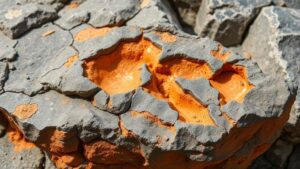The Discovery of Silver in the Chloride Mining District: New Mexico’s Silver Boom
The Discovery of Silver in the Chloride Mining District: New Mexico’s Silver Boom
The Chloride Mining District in New Mexico is a significant historical site that played a pivotal role in the United States silver boom during the late 19th century. This article explores the discovery of silver in this district, its impact on local and national economies, and the broader implications of mining on the development of New Mexico.
The Context of Silver Mining in the 19th Century
The 19th century was marked by a demand for precious metals to support growing economies and expand monetary systems. As the industrial revolution took hold, silver emerged as a vital commodity, especially in the context of the debate over the gold standard and bimetallism in the United States. By the time silver was discovered in the Chloride Mining District in the 1860s, the country was primed for a silver boom.
Discovery of Silver in the Chloride Mining District
The initial discovery rapidly attracted more miners to the area, leading to the establishment of numerous mining camps. Reports from 1869 suggest that the Chloride Mines produced approximately 7,000 ounces of silver. This initial success spurred an economic boom, as local merchants and support industries flourished alongside mining operations.
The Economic Impact of the Silver Boom
The silver boom in the Chloride Mining District had far-reaching economic implications, both locally and nationally. As mining operations expanded, the influx of miners led to the establishment of infrastructure such as roads, schools, and churches, enhancing the communitys quality of life. The district became home to hundreds of miners, many of whom relocated from other regions in search of fortune.
Statistical analysis reveals that during the peak years of silver production, estimates suggest the Chloride Mining District was producing upwards of $3 million worth of silver annually. This influx of wealth helped to transform New Mexicos economy, contributing to its eventual statehood in 1912.
Challenges Faced by the Mining Industry
For example, the mining process relied heavily on mercury to extract silver from ore, leading to severe mercury contamination in surrounding areas. Local communities began to voice their concerns about health risks, which would lead to increased regulatory scrutiny in later years.
Decline of the Silver Boom
- Decreased Silver Prices: The Panic of 1893 resulted in a sharp decline in silver prices.
- Technological Changes: The introduction of new mining technologies made it more difficult for smaller operations to compete.
The Legacy of the Chloride Mining District
Despite its decline, the Chloride Mining Districts legacy endures. It serves as a historical testament to the impact of mining on economic development and social changes in New Mexico. Today, remnants of the mining operations attract tourists, reflecting both historical interest and the ongoing importance of mining in discussions of sustainability and economic policy.
Modern advocates for preservation emphasize the need to balance historical recognition with ecological responsibility, highlighting the lessons learned from past mining practices. The Chloride Mining District serves as a case study for industries seeking to understand the significance of community and environmental concerns in the realm of natural resource extraction.
Conclusion: Key Takeaways
- The Chloride Mining District catalyzed New Mexico’s economic growth in the late 19th century.
- Miners and local entrepreneurs thrived during the silver boom, establishing critical infrastructure.
- The decline of the silver boom underscores the volatility of mineral markets and the need for sustainable practices in resource extraction.
- Lessons from the Chloride Mining District continue to inform modern mining practices and policies.
In examining the history of the Chloride Mining District, we gain insights not only into the silver boom itself but also into the larger narrative of economic development, environmental awareness, and cultural change in the American Southwest.



